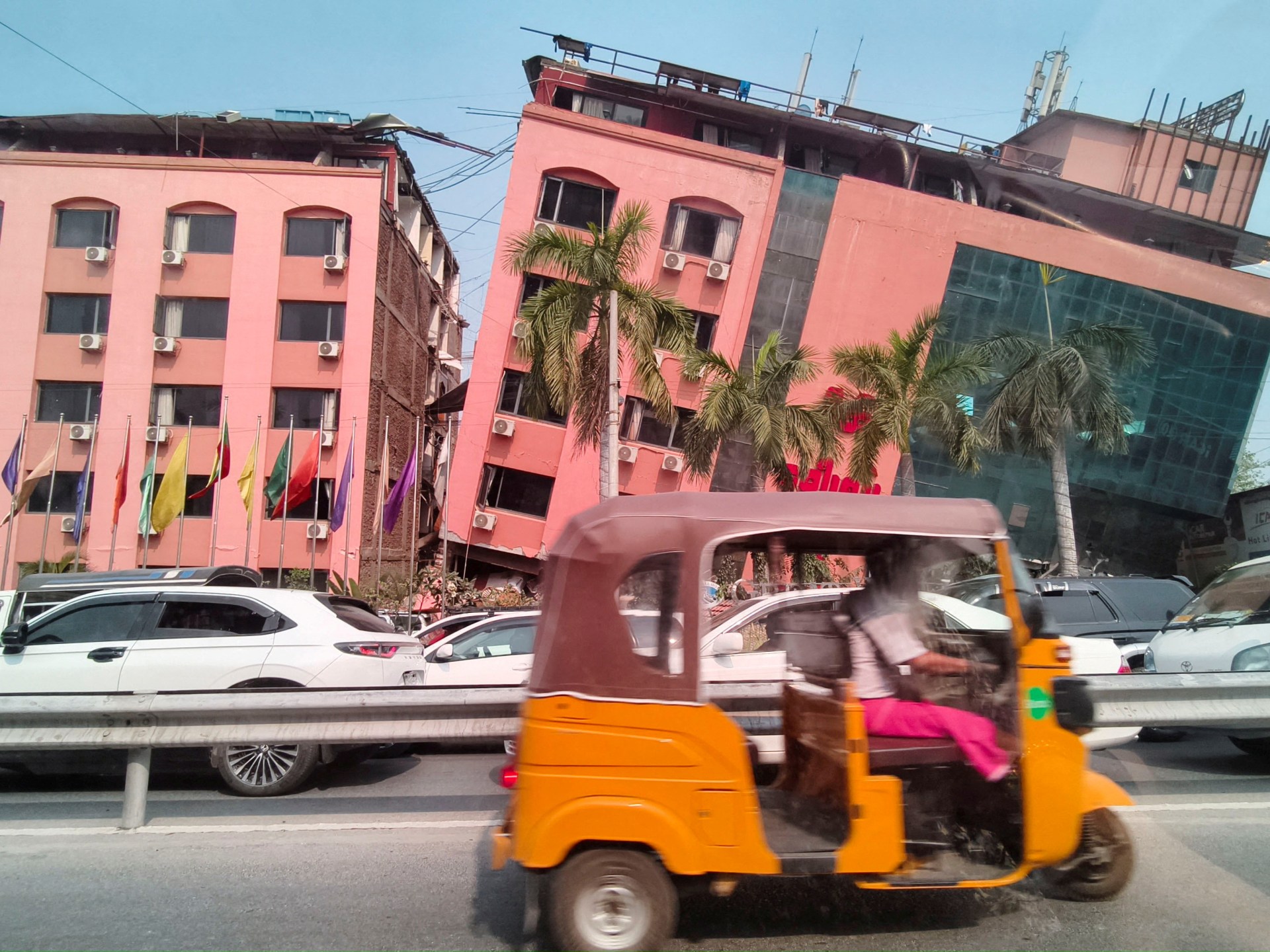A magnitude 7.7 earthquake quake in Myanmar also affected neighboring Thailand, and its tremors reached India and Cambodia.
The Sagaing region, where buildings fell and infrastructure buckled, was where the earthquake’s devastation appeared to be most severe. It appeared to be in Mandalay, Myanmar’s ancient capital, close to the epicentre of the Sagaing region, where much of the destruction occurred. According to state media, more than 140 people have died in the nation.
A UN seismic risk assessment found that Myanmar has experienced several quakes since a magnitude 7. 4 earthquake in Bago, which in 1930 left at least 550 people dead.
What makes this Southeast Asian nation, which has been plagued by a nearly four-year civil war, so susceptible to earthquakes, and how big was it?
Why do earthquakes occur?
First, let’s get a quick grasp of what an earthquake is. A hot, almost solid layer of rock called the mantle, surrounded by a jigsaw-like crust made up of constantly shifting tectonic plates, forms the core of the Earth’s three parts: a molten, mostly metallic core at its center, and a hot, almost solid layer on the outside.
Energy builds up as a result of the plates moving across the slippery mantle at various speeds and directions. The planet’s surface shakes so violently that it causes an earthquake when this energy is released. A tsunami is a series of large waves that are released from the ocean when the energy is released.
According to Will Yeck, a seismologist with the US Geological Survey (USGS), aftershocks are “triggered by changes in the Earth’s stress from the main shock.”
What is hidden in Myanmar’s underworld?
Myanmar is particularly vulnerable to earthquakes because it is situated between two tectonic plates, the India and the Eurasia plates.
The Saigang Fault refers to the boundary between the two plates. Millions of people are at risk as a long, straight line that travels roughly 1,200 kilometers (745 miles) from north to south through cities like Mandalay and Yangon.
The Myanmar earthquake was caused by the India and Eurasia plates rubbing sideways against one another, a process known as “strike-slip faulting,” according to the USGS.
The boundary between the two plates was compared to the well-known San Andreas Fault in California, which was responsible for the 1994 deadly Northridge earthquake, by Dr. Rebecca Bell, a tectonics expert at Imperial College London.
According to her, “the straight nature means earthquakes can rupture over large areas, and the larger the area of the fault that slips, the larger the earthquake,” she was quoted as saying.
What size of earthquake was it?
The Moment Magnitude Scale, which largely replaced the well-known Richter scale in the 1970s, is used to determine the earthquake’s strength.
The 7.7 earthquake on Friday caused chaos in Thailand and Myanmar.
A 33-story high-rise that was still under construction in Bangkok, Thailand’s capital, fell, killing at least eight people and trapping dozens of construction workers beneath the rubble.
Buildings fell to the ground in Myanmar’s Mandalay, the royal palace was damaged, and the Ava Bridge, a railcar, fell. Both Yangon and Naypyidaw, the modern city, suffered damage. According to state media, at least 144 people have died nationwide.
Nearly 800,000 people in Myanmar may have experienced the most bloody shaking, according to the USGS, with an expected rise in the death toll in the coming days.
What kind of damage is anticipated?
Only 10 kilometers (six miles) deep, the earthquake occurred at a relatively shallow depth.
According to Dr. Ian Watkinson, from Royal Holloway, University of London, shallow earthquakes can cause a lot of damage because “the seismic energy is not dissipated much by the time it reaches the surface.”
While some places along active fault lines, like California and Japan, have earthquake-resistant building codes, the infrastructure there is less well-equipped.
According to Watkinson, Myanmar has experienced “rapid urbanization,” with “a boom in high-rise buildings made of reinforced concrete.”
Source: Aljazeera





Leave a Reply